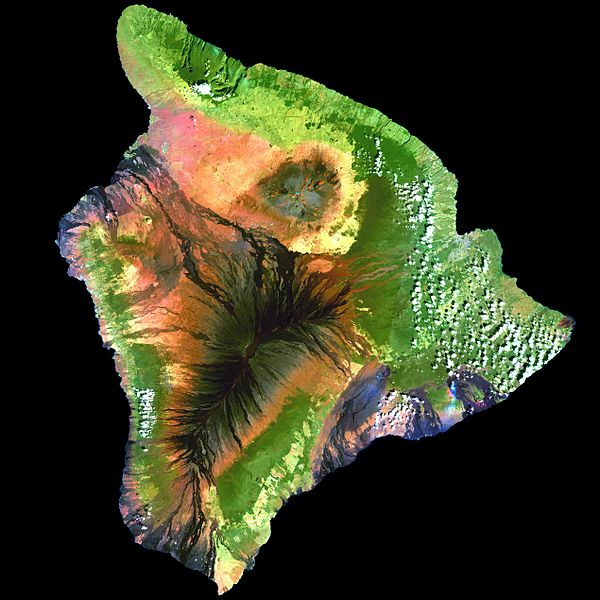Dosya:Island of Hawai'i - Landsat mosaic.jpg

Bu önizlemenin boyutu: 600 × 600 piksel. Diğer çözünürlükler: 240 × 240 piksel | 480 × 480 piksel | 768 × 768 piksel | 1.024 × 1.024 piksel | 2.048 × 2.048 piksel | 5.076 × 5.076 piksel.
Tam çözünürlük ((5.076 × 5.076 piksel, dosya boyutu: 5,19 MB, MIME tipi: image/jpeg))
Dosya geçmişi
Dosyanın herhangi bir zamandaki hâli için ilgili tarih/saat kısmına tıklayın.
| Tarih/Saat | Küçük resim | Boyutlar | Kullanıcı | Yorum | |
|---|---|---|---|---|---|
| güncel | 11.59, 1 Eylül 2009 |  | 5.076 × 5.076 (5,19 MB) | Túrelio | saved with 95% quality (low compression), but without "progressive" option |
| 11.59, 1 Eylül 2009 |  | 5.076 × 5.076 (4,9 MB) | Bidgee | Fix thumbnail generation issue caused by progressive loading. | |
| 11.31, 1 Eylül 2009 |  | 5.076 × 5.076 (4,91 MB) | Rocket000 | reuploading | |
| 11.52, 27 Aralık 2007 |  | 5.076 × 5.076 (4,91 MB) | Avenue | {{Information| |Description=This simulated true-color image of the island of Hawai'i was derived from data gathered by the Enhanced Thematic Mapper plus (ETM+) on the Landsat 7 satellite between 1999 and 2001. |Source=[http://veimages.gsfc.nasa.gov/2712/l |
Dosya kullanımı
Bu görüntü dosyasına bağlantısı olan sayfalar:
Küresel dosya kullanımı
Aşağıdaki diğer vikiler bu dosyayı kullanır:
- af.wikipedia.org üzerinde kullanımı
- ar.wikipedia.org üzerinde kullanımı
- ast.wikipedia.org üzerinde kullanımı
- az.wikipedia.org üzerinde kullanımı
- be.wikipedia.org üzerinde kullanımı
- bn.wikipedia.org üzerinde kullanımı
- br.wikipedia.org üzerinde kullanımı
- ca.wikipedia.org üzerinde kullanımı
- ceb.wikipedia.org üzerinde kullanımı
- cy.wikipedia.org üzerinde kullanımı
- de.wikipedia.org üzerinde kullanımı
- de.wikivoyage.org üzerinde kullanımı
- en.wikipedia.org üzerinde kullanımı
- Hawaii (island)
- Mauna Loa
- Landsat program
- Geoinformatics
- Puna, Hawaii
- User:Spikebrennan
- Portal:Hawaii/Selected article
- Portal:Hawaii/Selected article/11
- Wikipedia:Featured picture candidates/February-2008
- Wikipedia:Featured picture candidates/Big Island of Hawai'i
- User:Hawaiian Mafia
- User:Aoi/sandbox
- es.wikipedia.org üzerinde kullanımı
- es.wikibooks.org üzerinde kullanımı
- eu.wikipedia.org üzerinde kullanımı
- fa.wikipedia.org üzerinde kullanımı
- fr.wikipedia.org üzerinde kullanımı
- fr.wikivoyage.org üzerinde kullanımı
- ga.wikipedia.org üzerinde kullanımı
- haw.wikipedia.org üzerinde kullanımı
- he.wikipedia.org üzerinde kullanımı
- hi.wikipedia.org üzerinde kullanımı
- hu.wikipedia.org üzerinde kullanımı
- ia.wikipedia.org üzerinde kullanımı
- id.wikipedia.org üzerinde kullanımı
- incubator.wikimedia.org üzerinde kullanımı
- is.wikipedia.org üzerinde kullanımı
- ja.wikipedia.org üzerinde kullanımı
Bu dosyanın daha fazla küresel kullanımını görüntüle.
